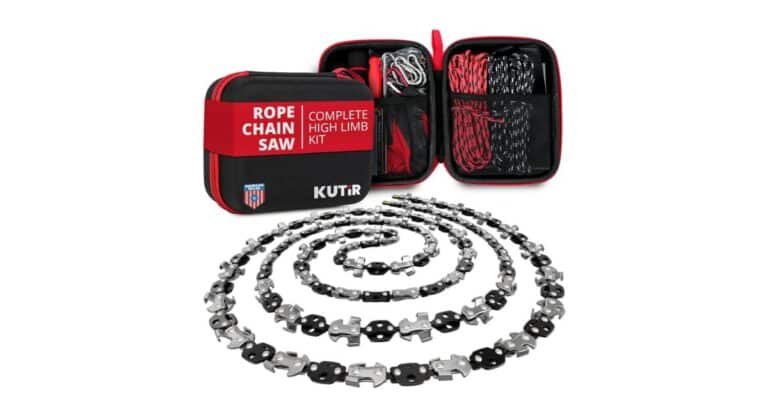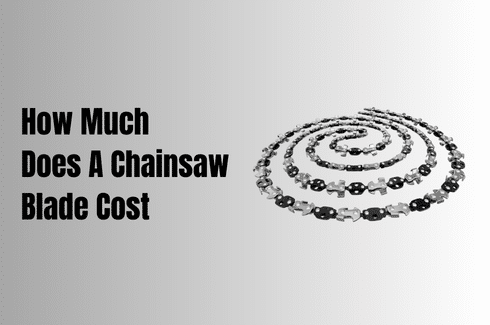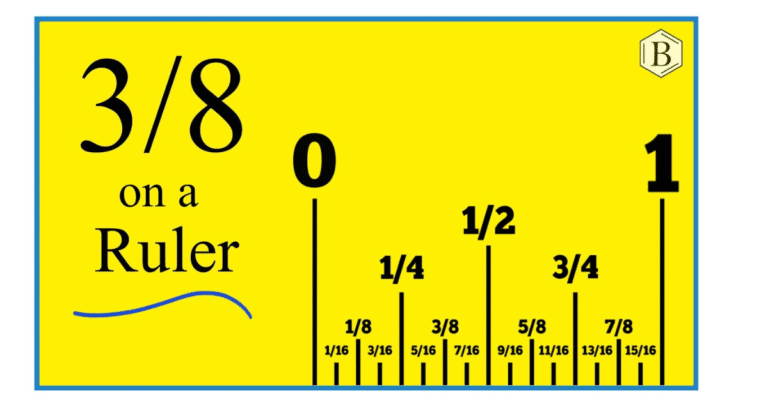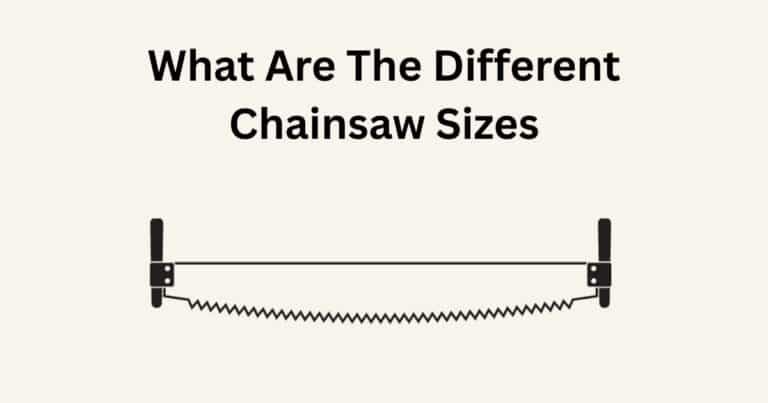Every year, thousands of chainsaw-related injuries send people to the hospital, mainly from using the wrong tool for the job. Picking between a manual and an electric chainsaw sets your safety, efficiency, and cutting success. If you’re handling wood in the wild or trimming your backyard, the right choice saves time and energy. Yet, many overlook the manual vs electric chainsaw and struggle with the wrong tool.
The main difference? A manual chainsaw requires physical effort, making it perfect for remote tasks. An electric chainsaw uses motor power, making it ideal for faster, more consistent home cutting jobs.
At Kutir Tools, we craft premium manual chainsaws built for durability, portability, and real-world reliability. Our best-selling rope chainsaws feature high-carbon steel blades designed to cut through tough branches with minimal effort.
What Is a Manual Chainsaw?
A manual chainsaw, also known as a pocket chainsaw, is a simple handheld cutting tool consisting of a chain with sharp teeth attached to handles on both ends. Unlike powered chainsaws, it requires a manual back-and-forth pulling motion to cut through wood or branches.
Manual chainsaws are lightweight, portable, and emission-free, making them ideal for small cutting tasks such as pruning or preparing firewood in remote or quiet environments.
Though labor-intensive and slower than gas or electric saws, they are affordable, easy to maintain, and useful when power sources are unavailable. Manual chainsaws are favored for their simplicity, quiet operation, and ability to work without fuel or batteries
What Is an Electric Chainsaw?
An electric chainsaw is a cutting tool powered by electricity rather than gasoline. It plugs into a power source through a cord (corded electric chainsaws) or runs on rechargeable batteries (cordless models).
Electric chainsaws use electric motors, often brushless for improved efficiency and durability, to drive the chain that cuts through wood. They are generally lighter, quieter, and require less maintenance than gas-powered saws, making them ideal for light to medium tasks like pruning, trimming, and cutting small to medium trees.
While cordless models offer portability, corded chainsaws provide consistent power but need access to an outlet. Electric chainsaws are popular for their ease of use, environmental friendliness, and suitability for residential and garden use
Quick Comparison Table: Manual vs Electric Chainsaw
| Feature | Manual Chainsaw | Electric Chainsaw |
| Power Source | Human effort | Electricity (corded or battery) |
| Weight | Very lightweight | Heavier due to motor and battery |
| Portability | Highly portable, no power needed | Requires power source or charged battery |
| Cutting Speed | Slow, depends on user effort | Fast, cuts through wood quickly |
| Noise Level | Silent | Noisy, though quieter than gas models |
| Maintenance | Minimal maintenance | Requires motor care, chain oiling |
| Best Use | Light cutting, survival, camping | Home use, trimming, firewood cutting |
| Price | Very affordable | More expensive |
What Is The Difference Between Manual Chainsaw And Electric Chainsaw
1. Purpose
If you’re outdoors camping, a manual chainsaw is your go-to for cutting small branches or limbs. It’s lightweight, easy to pack, and works without power.
You can rely on it for survival tasks, trail clearing, or quick firewood cuts. However, it’s not fit for home projects or cutting thick logs. You’ll spend more time and effort.
An electric chainsaw is better for regular yard work. It can trim trees, cut firewood, and handle medium tasks efficiently. It suits home users with access to power but struggles with heavy-duty cutting.
2. Power
A manual chainsaw derives power entirely from your physical effort. Every cut depends on how consistently you can pull. This limits cutting force, especially on dense or thick wood.
The absence of a mechanical drive means progress slows as fatigue sets in. While effective for occasional light tasks, it lacks sustained power for heavy work.
An electric chainsaw delivers mechanical power via an integrated motor. Corded models measure power in amps, while battery types use volts. This setup maintains chain speed and torque, cutting through medium to large wood with minimal physical strain.
3. Ease of Use
A manual chainsaw demands physical coordination and stamina. You must control the chain’s motion evenly to prevent binding. Working on high or awkward branches is difficult and tiring.
Without consistent pulling strength, the chain may snag or jam. For beginners, using it effectively requires practice and patience. Its simplicity in design doesn’t translate to user-friendly operation, especially for prolonged tasks.
In contrast, an electric chainsaw offers straightforward usability. You start it with a button or switch, no complex steps involved. The motor maintains chain speed, reducing the need for manual control. Ergonomic handles and balanced weight distribution enhance comfort. Even beginners can operate it confidently with basic guidance.
4. Maintenance
With a manual chainsaw, you’ll spend little time on maintenance. Just keep the chain clean after each use. If you’re cutting hardwood or debris-filled branches, you’ll need to sharpen it regularly. That’s the only way to keep your cuts smooth and efficient.
You won’t deal with motors, oil, or moving parts. This makes it perfect if you want a tool that stores easily without extra care. But skip the sharpening, and you’ll struggle with every pull.
Using an electric chainsaw, you’ll handle more upkeep. You’ll need to oil the chain frequently to avoid friction damage. If you’ve got a battery model, you must monitor charging habits to preserve battery life. Corded models? Always check the cable for wear before plugging in. You’ll also want to inspect the motor occasionally. Staying on top of these tasks keeps your saw cutting fast and safely every time.
5. Safety
A manual chainsaw carries lower safety risks since there’s no powered chain. You control every movement directly. Yet, improper pulling or losing grip can cause cuts or sprains. Fatigue increases mistakes, leading to slips or snags. Always wear gloves and eye protection to stay safe while cutting.
An electric chainsaw poses higher risks due to the fast-moving chain. Accidental starts can cause severe injuries. However, safety features like chain brakes and trigger locks reduce dangers. You’ll also need gloves, goggles, and hearing protection to work safely.
6. Cutting Speed
With a manual chainsaw, cutting speed depends entirely on your pulling force and rhythm. On average, it takes several minutes to cut a 6-inch branch. The speed drops further with hardwood or thicker limbs. If you lose consistency, the chain can bind, slowing you down.
After repeated cuts, you’ll notice fatigue reducing your pace. While efficient for emergency or survival tasks, it’s not built for speed.
An electric chainsaw cuts significantly faster. A standard 12-amp corded model spins the chain at around 9 to 15 meters per second. That speed slices through a 6-inch log in under 30 seconds. Battery models vary, but many deliver similar chain speeds when fully charged.
Consistent motor power maintains cutting velocity without tiring you out. You’ll finish jobs quicker and with less physical effort compared to any manual alternative.
7. Performance Consistency
A manual chainsaw delivers inconsistent performance depending on your stamina and technique. As you tire, the cutting speed drops, and efficiency suffers. Variations in pulling strength can cause uneven cuts or chain snags. Harder woods worsen this inconsistency.
You’ll find that performance is only as steady as your endurance. For extended tasks, maintaining consistent output is nearly impossible without rest.
An electric chainsaw’s motor provides consistent performance. Whether corded or battery-powered, the chain runs steadily throughout the cut. This ensures smooth, predictable results even on thicker wood. As long as power remains, cutting quality doesn’t decline.
8. Portability
A manual chainsaw offers superior portability. It’s lightweight, compact, and easy to pack in a backpack. With no power source required, you can effortlessly carry it into remote areas. This makes it perfect for camping, hiking, and survival kits.
An electric chainsaw is less portable. Corded models need a power outlet, limiting mobility. Battery models improve flexibility but add weight due to the batteries. Transporting them requires more space and preparation.
9. Bar Length
A manual chainsaw doesn’t have a fixed bar like powered saws. Instead, it uses a flexible chain, typically 24 to 48 inches long. You can choose longer versions to cut wider branches or trunks. However, longer chains demand more strength and coordination from you. Shorter chains are easier to manage but limit the diameter of wood you can cut. If you’re carrying gear, the compact size of a shorter chain is practical.
An electric chainsaw comes with a fixed bar length, usually ranging from 6 to 18 inches. Home-use models often feature 10 to 14-inch bars, perfect for pruning and small trees.
If you’re handling larger logs, a 16 or 18-inch bar cuts efficiently. Longer bars offer deeper cuts but increase weight and handling difficulty. You’ll need to match the bar length with your cutting needs to avoid strain or inefficiency during work.
Advantages and Limitations Of Manual Vs Electric Chainsaw
Before choosing between a manual and an electric chainsaw, you need to weigh the pros and cons of each. Both tools serve distinct purposes and come with their own strengths and drawbacks
Pros of Electric Chainsaw
- Cuts faster with consistent power output.
- Easy to start with a button or switch.
- Requires less physical effort during operation.
- Quieter than gas-powered chainsaws.
- Low maintenance compared to gas models.
- Ideal for residential and yard tasks.
- Eco-friendly with no fuel emissions.
Cons of Electric Chainsaw
- Limited by cord length or battery runtime.
- Less powerful than gas chainsaws for heavy-duty tasks.
- Battery replacements can be costly.
- Requires regular chain oiling and battery management.
- Corded models restrict mobility in large areas.
Pros of Manual Chainsaw
- Extremely portable and lightweight.
- No need for fuel, batteries, or electricity.
- Simple construction means minimal maintenance.
- Silent operation, no noise pollution.
- Affordable compared to powered chainsaws.
- Effective for survival, camping, and remote work.
Cons of Manual Chainsaw
- Slow and labor-intensive cutting process.
- Performance is limited by user strength and stamina.
- Not suitable for large or thick logs.
- Increased fatigue after extended use.
- The chain can snag or bind with poor technique.
Manual Vs Electric Chainsaw: When To Choose What
Choose a Manual Chainsaw if:
- You’re heading into remote areas without access to power.
- Portability and lightweight tools are essential for your trip.
- You need a compact tool for emergency or survival kits.
- Your main task is cutting small branches or limbs under 6–8 inches.
- Noise-sensitive environments require silent tools.
- You want a tool that’s simple and requires almost no maintenance.
- The budget is limited, and you need a low-cost cutting option.
Choose an Electric Chainsaw if:
- You need to cut trees, logs, or branches up to 12–16 inches thick.
- Speed and cutting consistency are important for your projects.
- You’re working near your home or places with electricity access.
- A quieter tool is necessary for neighborhood or residential work.
- You want less physical strain while cutting for extended periods.
- You prefer modern safety features like chain brakes and trigger locks.
- You plan to use the chainsaw regularly for yard or garden maintenance
In Closing
Choosing between a manual and electric chainsaw depends entirely on your environment, task size, and personal preference. A manual chainsaw is your best ally outdoors if portability and simplicity matter most. The electric chainsaw stands out for speed, consistency, and home-based work.
Both have unique advantages that serve specific needs; knowing which fits your situation saves time, energy, and frustration. Continually assess your cutting goals before picking your tool.
Looking for a reliable manual chainsaw? Explore Kutir Tools today and gear up with our expertly crafted, field-tested chainsaws built for serious outdoor challenges.
FAQs
Q. Can a manual chainsaw cut hardwood effectively?
Answer: Yes, but it requires significant effort and time. A sharp chain and consistent pulling are essential for hardwoods like oak or maple to avoid jamming or slow progress.
Q. How long does a battery last on an electric chainsaw?
Answer: Most battery-powered chainsaws offer 30 to 60 minutes of cutting time per full charge. However, this depends on the battery capacity and the wood thickness you’re cutting.
Q. Is chain maintenance different for manual and electric chainsaws?
Answer: Manual chainsaws need regular sharpening but no lubrication. Electric chainsaws require both sharpening and chain oiling to maintain cutting speed and prevent wear.
Q. Which chainsaw type is better for beginners?
Answer: An electric chainsaw is generally easier for beginners due to its steady power and built-in safety features, such as chain brakes and trigger locks.
Q. Can I use a manual chainsaw overhead?
Answer: It’s possible but not recommended. Manual chainsaws are harder to control overhead, increasing the risk of injury or chain binding in awkward positions.





